Notes: The Art and Architecture of Psychoterror
Tracing Artistic Influence and Design in the Spanish Civil War's “Chekas”
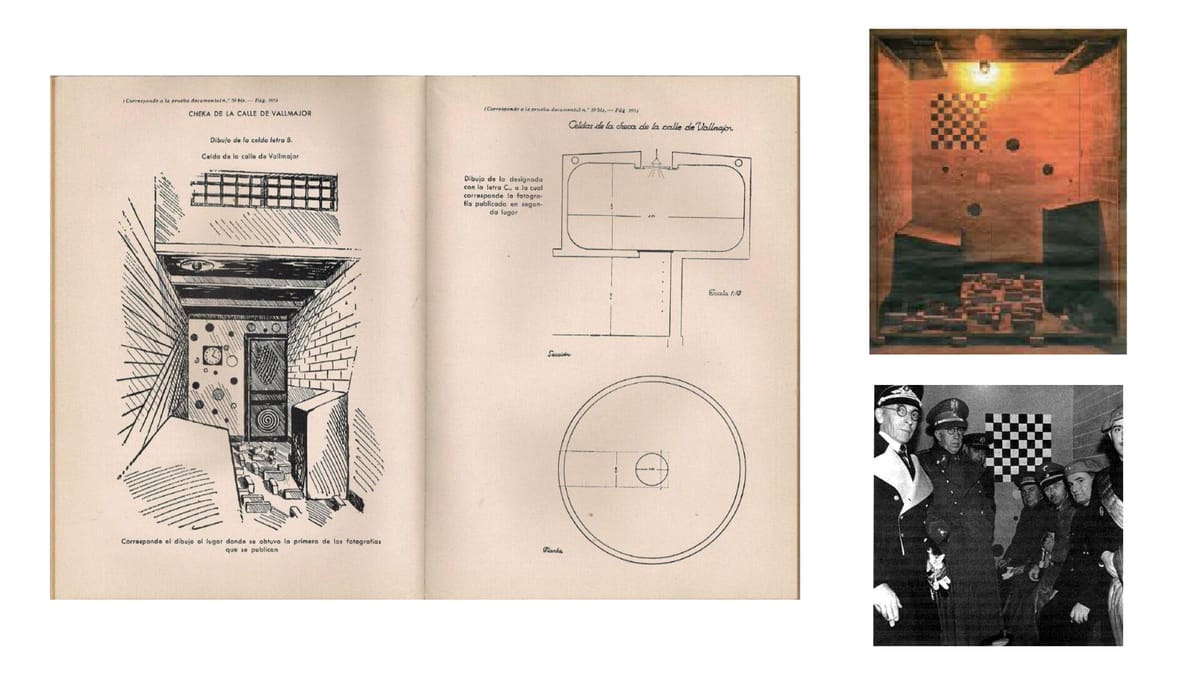
This essay explores how design and architecture were directed as instruments of torture during the Spanish Civil War, particularly in the notorious 'Chekas' - detention centers inspired and imported from Soviet models. I will also delve into the dual utilization of art and architecture, prompting an in-depth examination and questioning of design's role within the dynamics of power. This exploration will address the unsettling trend of art and architecture being employed as instruments of psychological control, a phenomenon that extends beyond specific geographic and temporal boundaries.
The Historical Backdrop
The Cheka was the first of several Soviet state security organizations and played a significant role during and after the Russian Revolution. Established in December 1917 by the Bolshevik government, it was initially created as a temporary institution to combat counter-revolution and sabotage. The Cheka, led first by Felix Dzerzhinsky, quickly became notorious for its brutal and repressive tactics, including summary executions and mass arrests, particularly during the Red Terror campaign. As the Bolsheviks consolidated power, the Cheka expanded its role in suppressing political dissent and opposition, establishing a widespread network of informants and executing thousands of perceived enemies of the Bolshevik regime. The organization underwent several reorganizations and name changes, eventually evolving into the KGB in the Soviet era.
Between 1918 and 1921, the Cheka recruited about 200,000 members in the USSR (3). They employed a range of extreme interrogation techniques, which included both physical and psychological methods. These methods were often brutal and inhumane, reflecting the harsh approach the Cheka adopted towards suspected counter-revolutionaries and political dissidents during this period.
Cheka methods are described by historian Orlando Figes in his book A People’s Tragedy:
“Each local Cheka had its own speciality.
In Kharkov they went in for the ‘glove trick’ – burning the victim’s hands in boiling water until the blistered skin could be peeled off: this left the victims with raw and bleeding hands and their torturers with ‘human gloves’.
The Tsaritsyn Cheka sawed its victims’ bones in half.
In Voronezh, they rolled their naked victims in nail-studded barrels.
In Armavir, they crushed their skulls by tightening a leather strap with an iron bolt around their head.
In Kiev, they affixed a cage with rats to the victim’s torso and heated it so that the enraged rats ate their way through the victim’s guts in an effort to escape.
In Odessa, they chained their victims to planks and pushed them slowly into a furnace or a tank of boiling water. A favourite winter torture was to pour water on the naked victims until they became living ice statues (6). ”
The psychological torture techniques honed in the USSR traveled to Spain during its civil war, a frontline for the broader European ideological conflict between fascism and communism. In Spain, the Republicans, embracing communism and atheism, clashed with the right-wing fascistic religious Nationalists, led by Franco, both utilized torture and design in drive for authoritarian control.
Spanish Chekas: A Convergence of Art and Torture
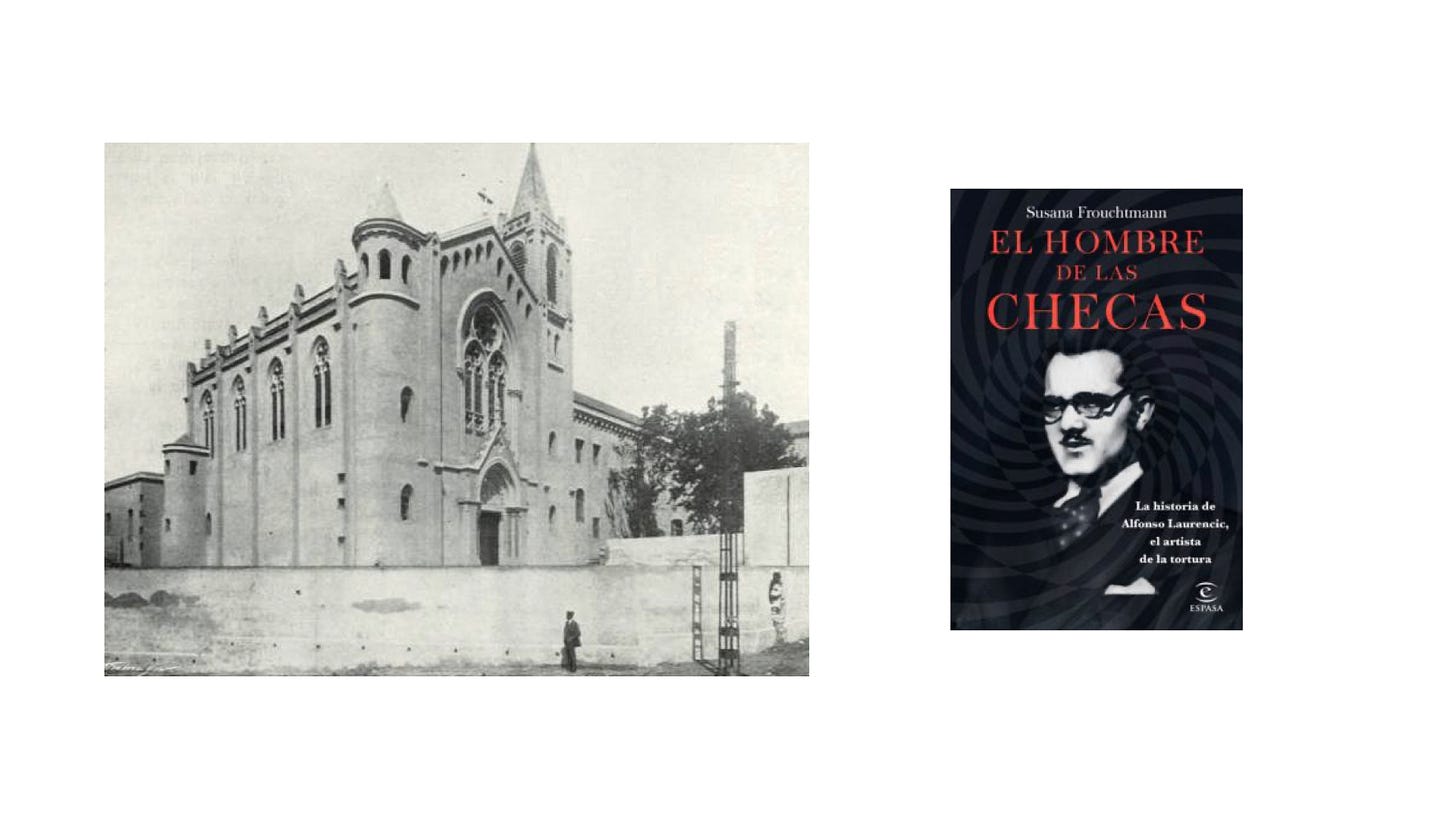
The Spanish Chekas, especially the Vallmajor Cheka in Barcelona, stand out for their unique integration of modern art and architecture into their design.
Designed by Alfonso Laurencic under the guidance of Santiago Garcés, a 23 year old PSOE(Popular Front) member leading the SIM (Military Intelligence Service), it uniquely blended modern art and architecture with psychological warfare along with the macabre techniques honed in the USSR (1).
Alfonso Laurencic, influenced by avant-garde movements like the Bauhaus and artists like Kandinsky, transformed the Convent of Les Magdalenes Agustines into a surreal landscape of psychological torment (2).
Located in the Convent of Les Magdalenes Agustines, the church was transformed into a detention center using prisoner labor, including the artist Víctor Ripaux, who was charged with helping priests escape the red terror (1). Ripaux, along with other Conservatives, were compelled to dismantle all religious elements in the church.
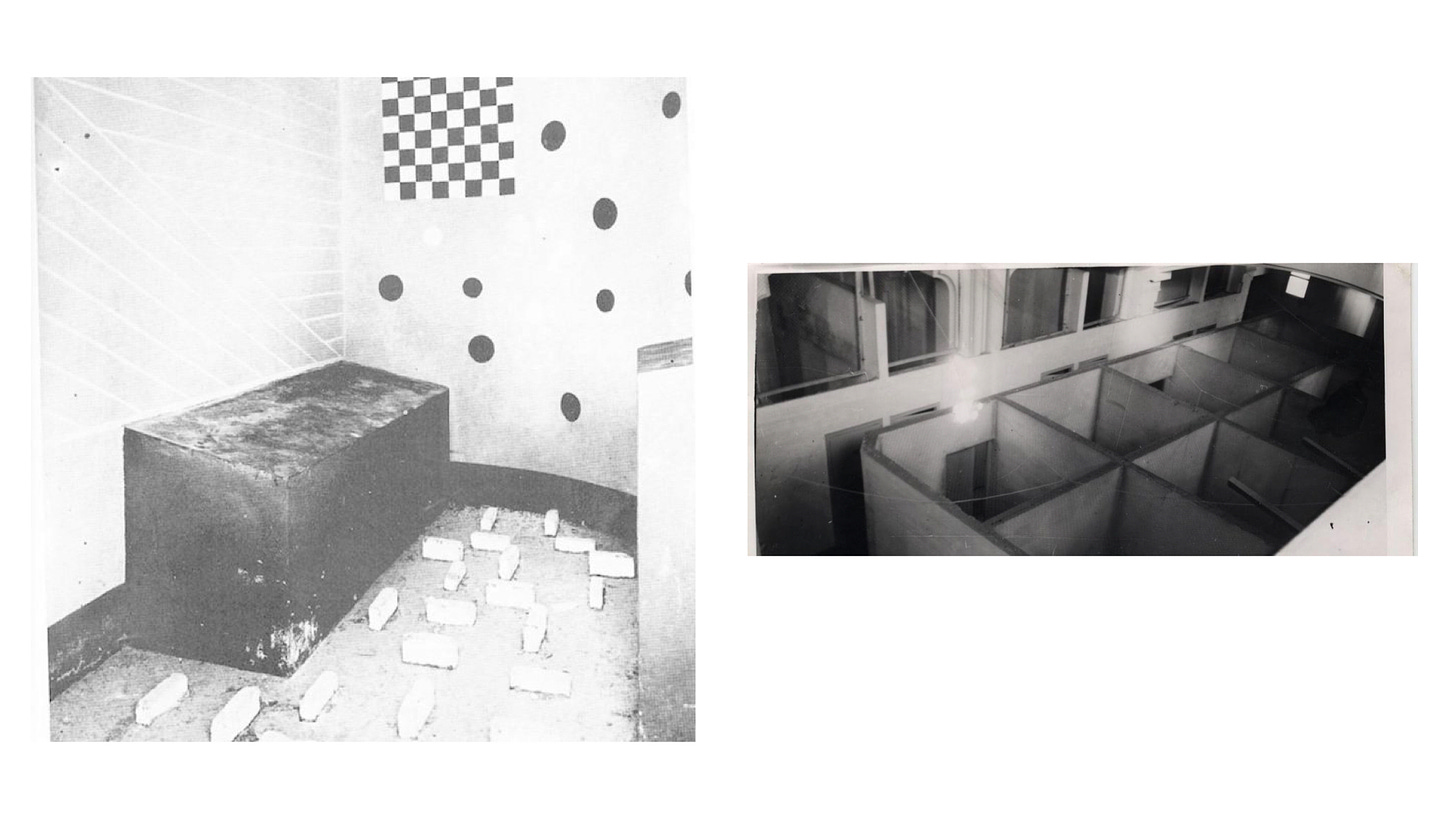
Alfonso Laurencic used modern color and form theories to psychologically torment prisoners. In his designed cells, prisoners faced beds tilted at 20 degrees, furniture designed to induce torture, and walls covered in disorienting surrealist patterns.
Cells featured stone seat designed to make occupants instantly slide to the floor, other surfaces were painted in tar and became tremendously hot to touch in the ventilation free room, especially in summer.
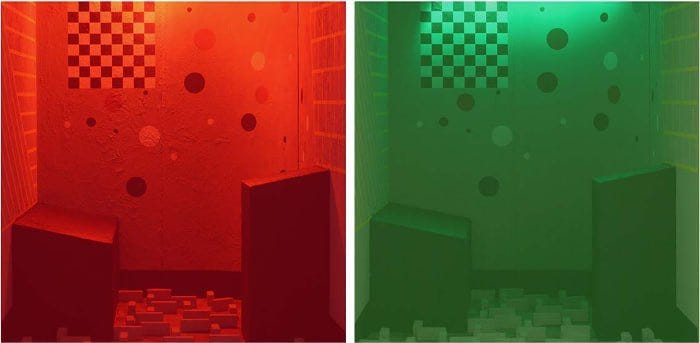
Laurencic had circles and a checkerboard patterns painted in the cells and installed greenish crystals to filter light, altering the appearance of the patterns and creating a disorienting atmosphere. He deliberately chose green to evoke a feeling of sadness and hopelessness, he said, to produce in the prisoner “the effect of a sad, rainy and hopeless day.”
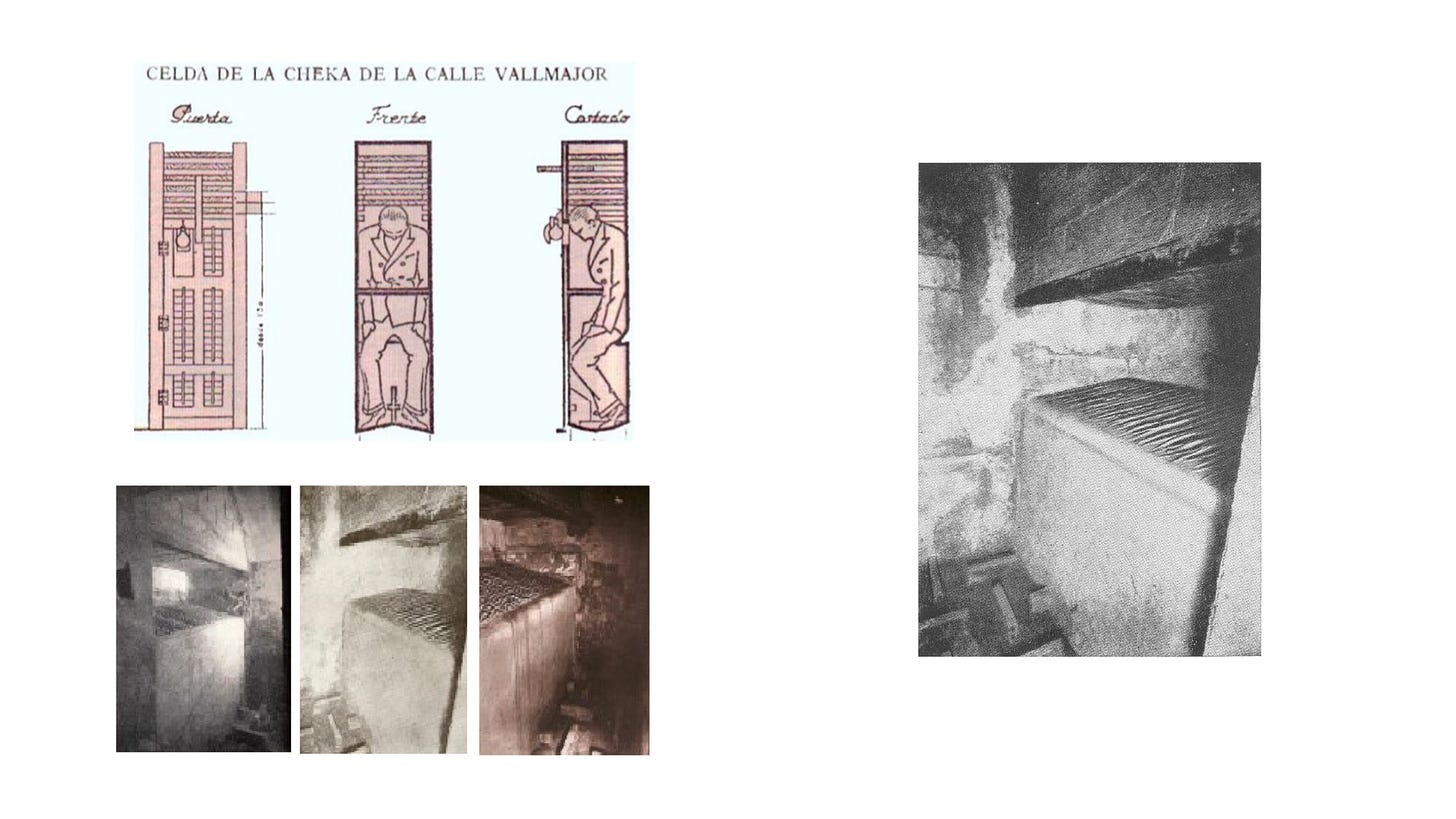
This tactic was part of Laurencic's broader strategy to manipulate prisoners' emotions and mental state through the use of color and form, a technique that mirrored Kandinsky's theories on the psychological impact of these elements (3). His goal was to intensify the hallucinatory experience of confinement, aiming to aggregate a prisoners' psychic collapse.
The cells also featured irregularly shaped bricks on the floor that prevented prisoners from walking. The walls in the 2 m x 1 m cells were covered in surrealist patterns designed to make prisoners distressed, and lighting effects were used to make the artwork even more dizzying.
During the night, the cells were illuminated with red light, significantly altering the visual perception of shapes. This effect was used to manipulate the prisoners' minds, with spirals and dice shapes intended to suggest certain ideas and circles and lines designed to agitate their nervous systems. Furthermore, the cells were equipped with altered clocks, set up to display only four or five hours over an entire day, thereby intensifying the prisoners' sense of disorientation and time warping.
Laurencic and his team created a firing squad wall in the Cheka's courtyard, accompanied by a large mock grave, to conduct numerous fake executions for interrogation purposes.
For particularly resistant inmates, a special cell called ‘La Campana’ or ‘The Bell’ were used (2). This cell, about fifteen feet in diameter with tar-black walls and a powerful spotlight, was built with double walls to enhance sound resonance and had no ventilation. The prisoners' diet, extremely minimal (consisting of at best a daily glass of water, a broth with some chickpeas and a piece of black bread); lacking in nutrition, many died from diseases (2).
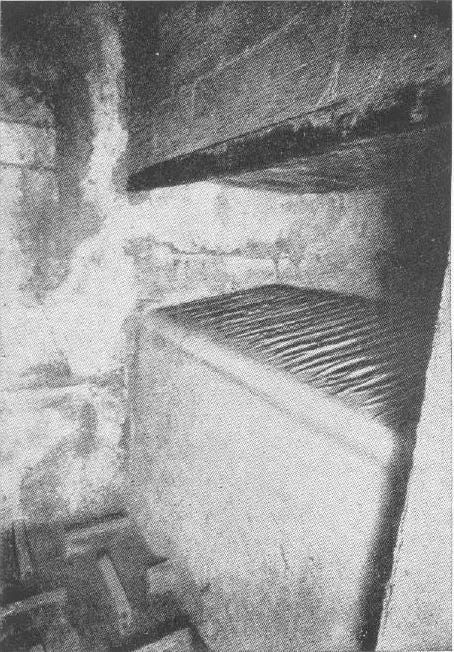
Ending the conflict in 1939, Laurencic was arrested and executed by Franco’s regime. This did not end the use of innovative torture methods or design. His innovative “psycho terror” model in the communist Chekas, astonished and attracted attention from German and Spanish fascists. German Nazi’s and Spanish Fascists visited these communist Chekas, likely finding inspiration for evil in their own designs(2).
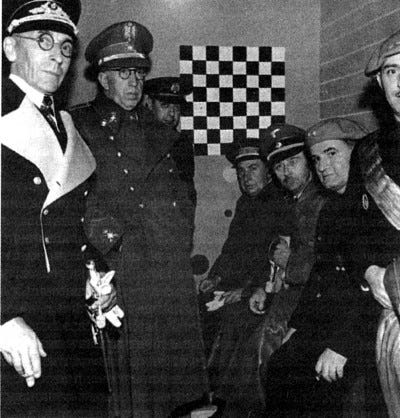
The intricate details of Vallmajor's tortures are also widely known partly because Laurencic proudly described them during his court trial. The Franco regime capitalized on these details for further post war propaganda, as reflected in R. L. Chacón's book Why I made the ‘Chekas’ of Barcelona: the court martial of Alfonso Laurencic on Laurencic's court martial. Ironically Chacón’s book served primarily as a propaganda piece justifying Franco’s post-war repression against leftists and its own terror tactics in repression in post civil war Spain.
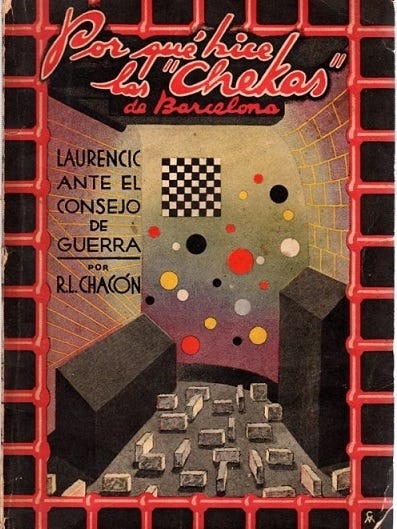
Some theorists discount the value of art direction in these torture cells. Dr Carl-Henrik Bjerstrom a lecturer in Modern European History at Birkbeck College challenges the notion that there is strong connection in Laurencic's “innovation” to modernist art, instead suggesting instead that their physical and psychological impact was more important. There is a complexity of interpreting Laurencic's work and its significance in the history of psychological warfare and the Spanish Civil War and Bjerstrom argues the connections to modern abstract artists like Kandinsky and Klee are superficial; as most of the “innovations were physical” and that the cell patterns resemble general abstract designs or chess board geometries as much as they do these artists' works. “Abstract artists he argues didn't intend to manipulate psychological states with their art” 4
Laurencic's work is crucial in understanding the complex relationship between "design" and "art direction" in the context of "psychoterror". His designs were deliberately crafted to induce psychological discomfort. This approach required a deep understanding of contemporary art theories, particularly those emerging from the Bauhaus movement, known for emphasizing the role of aesthetics in everyday life.
However, while Laurencic subverted the Bauhaus principles, which were originally intended to create aesthetic comfort. The Bauhaus school focused on integrating artistic principles to design functional and visually appealing living and working spaces. In a stark departure from this ethos, Laurencic manipulated these principles for the exact opposite effect, turning them into tools for psychological distress.
Reflection on the Broader Design Implications
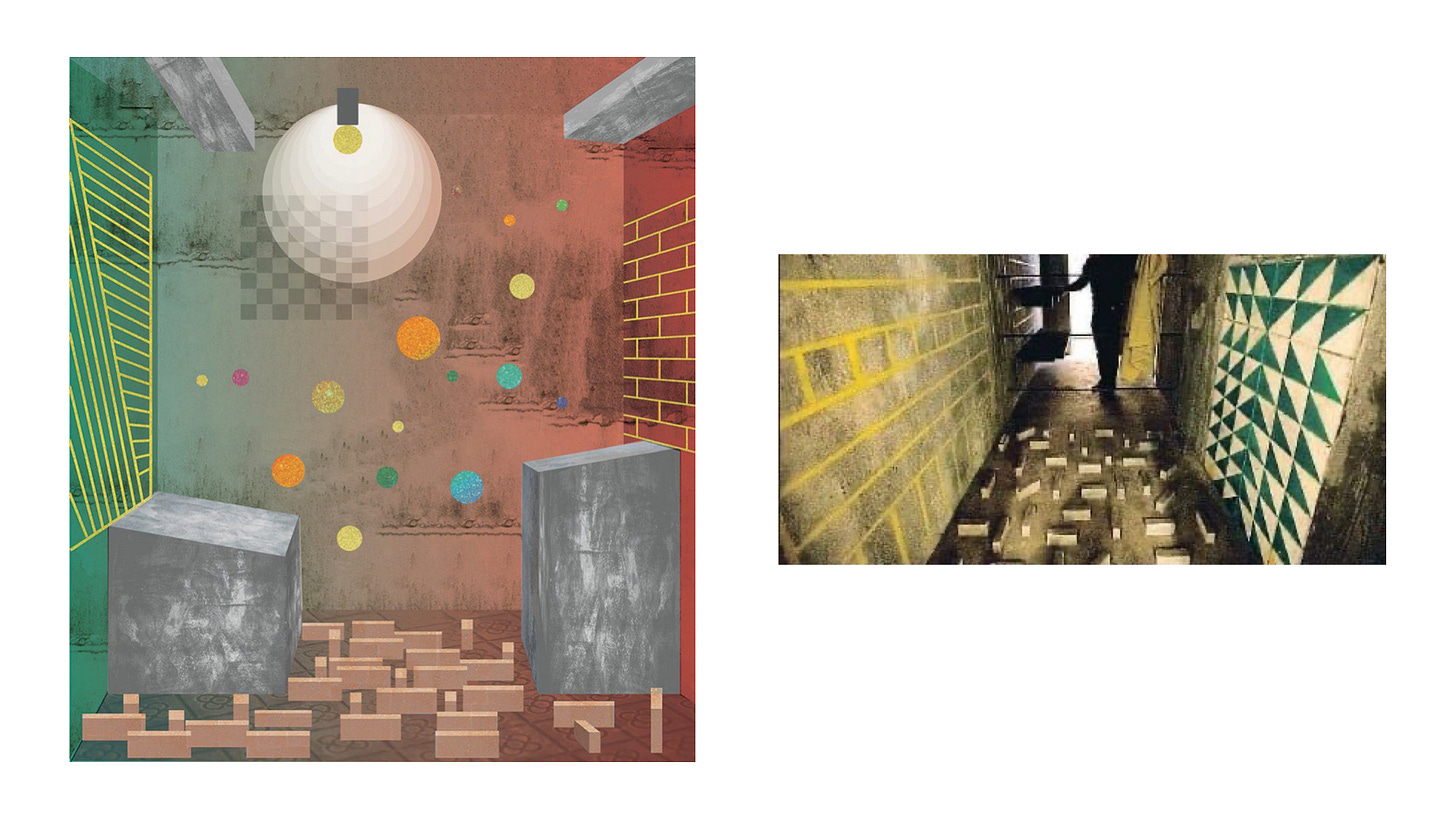
A 2019 exhibition Pedro G. Romero, titled "Habitación. El Archivo F.X., las chekas psicotécnicas de Laurencic y la función del arte" at the Museu Nacional d’Art de Catalunya in Barcelona further inverts the connections between modern art and architecture tools of torture during the Spanish Civil War 5. Featuring reconstructions of some of the cells and torture tools, Romero brings fruther attention to the use of radical art in revolutionary and totalitarian politics. Viewers can participate viscerally in the aesthetic design of torture building cut out moquettes they can take home, suggesting and linking the contemporary in being complicit in the “psychoterror” design instructions.
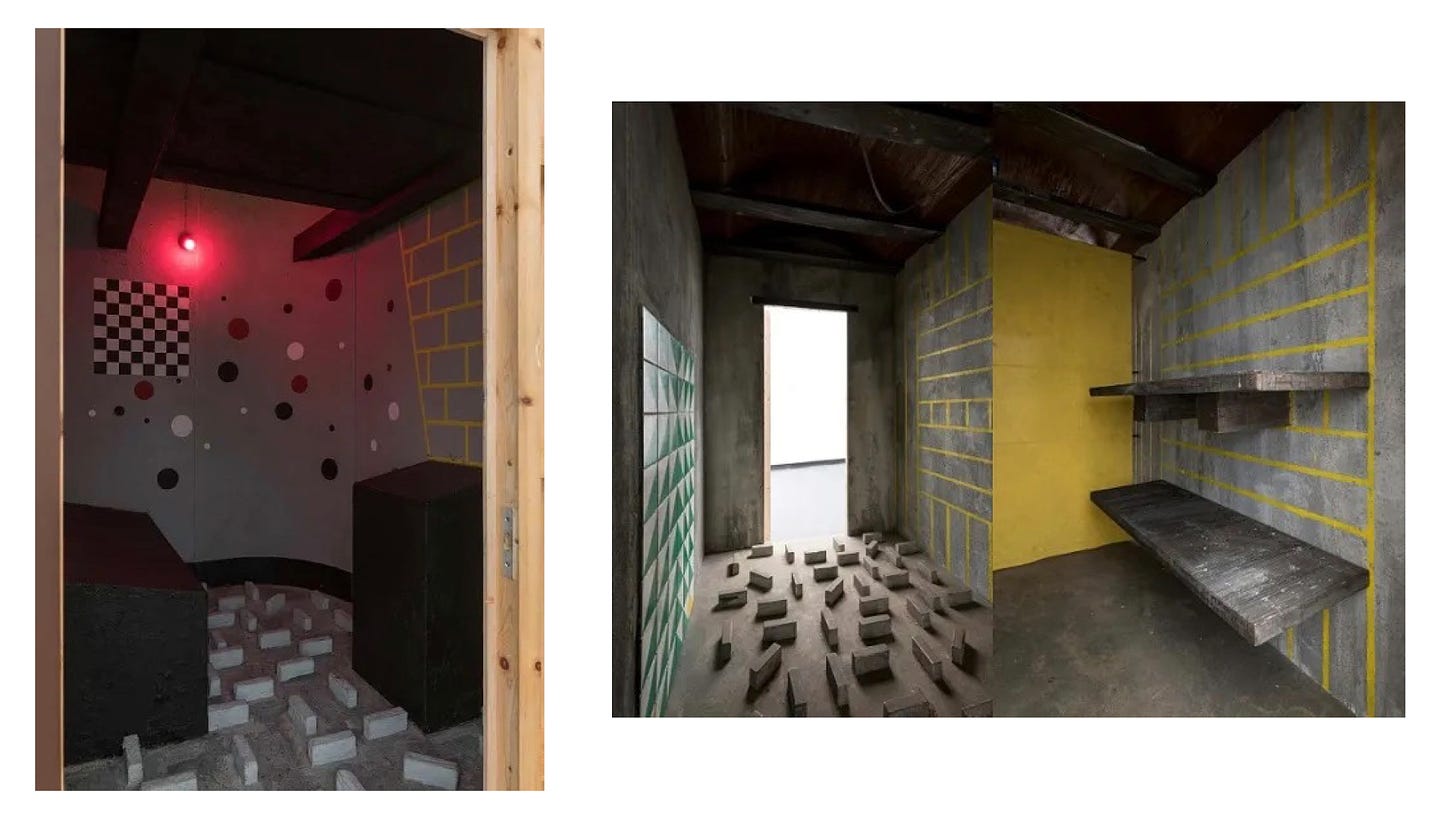
Romero suggests these installations reflect a paradoxical nature, where art and politics — both revolutionary and counter-revolutionary — converge in the realm of torture, under the guidance of 'design professionals'. His insights point to a disturbing trend: the dual use of design as a tool for control, transcending geographical and temporal boundaries.
It's intriguing to consider whether later intelligence and torture techniques, as used by agencies like the KGB, CIA, and regimes of Pol Pot, Pinochet, etc., might have drawn inspiration from earlier methods like those of the Spanish Cheka. Particularly noteworthy is the Cheka's use of modern art in their designs. This approach underscores a broader theme in architecture and design that is concerned with the globalization and homogenization of totalitarian politics and its connections to artistic expression and political repression.
These instances document also a global trend in design - a homogenization of aesthetics, a concept akin to Rem Koolhaas's 'Junk Space'. While Koolhaas critiques the uniformity in structures like shopping malls, a similar trend is observable in the design of prisons and torture facilities. This global trend in design, further amplified by today's social media algorithms, results in a standardized design language, underscoring the dual nature of design as a tool for both oppression and liberation. The tyrannical nature of design language becomes more pronounced in these globally influenced 'psychoterror' Chekas.
This convergence of art, architecture, and political history opens up a vast landscape for deeper exploration. It presents a rich subject ripe for a comprehensive essay or book. For now, it leaves us with much to ponder in the spaces we occupy.
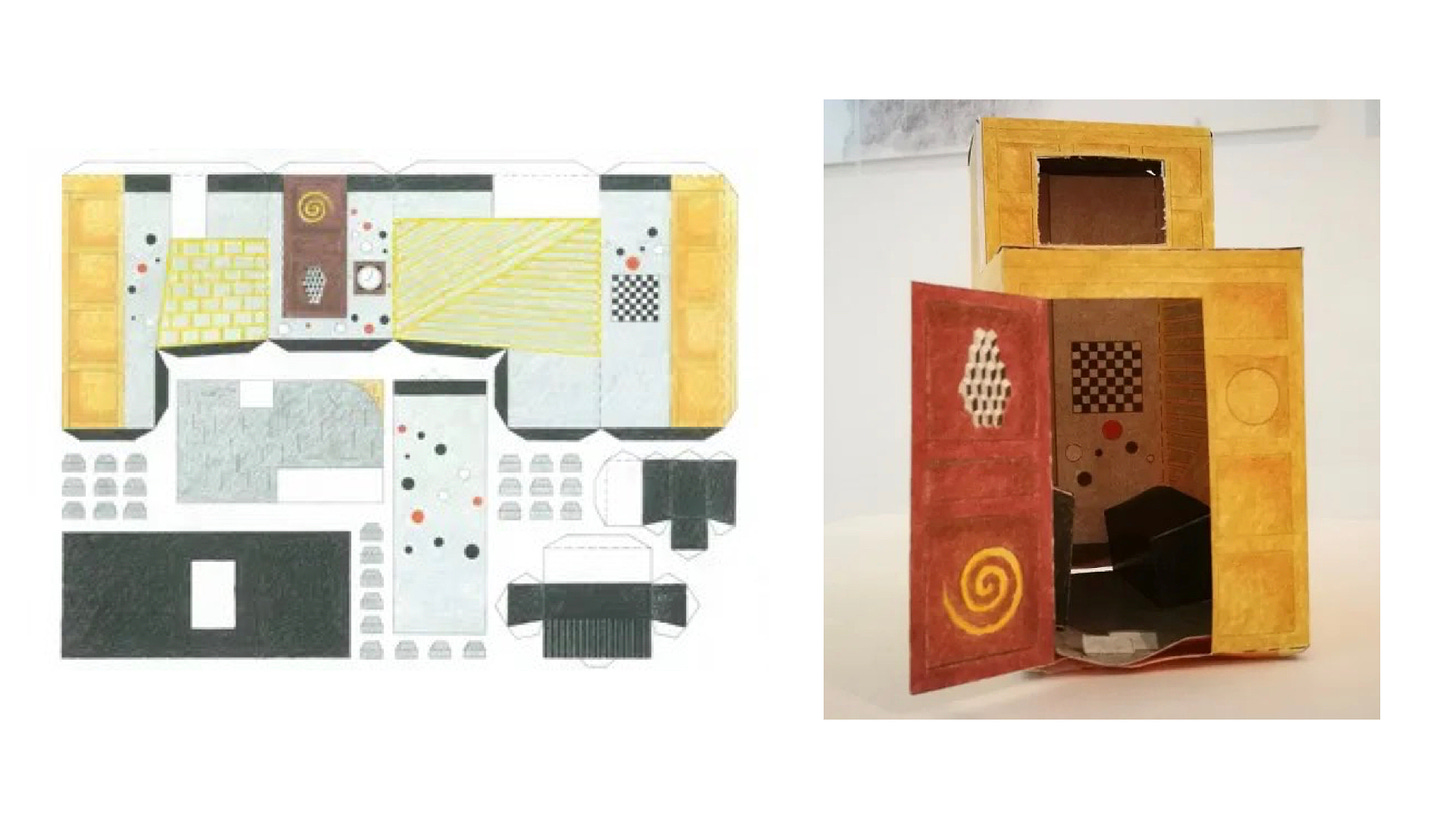
—
If this is topic is of piqued interest I recommend my discussion with artist and art curator in the Interview: Aaron Moulton on the use of art/design in contemporary and post USSR state craft and psychological operations.
Sources for details and images:
- Guerra En Madrid. “La checa de Vallmajor, una casa de los horrores en Barcelona” , https://guerraenmadrid.net/2019/04/04/la-checa-de-vallmajor-una-casa-de-los-horrores-en-barcelona/
- Barcelofília. TXECA DEL CARRER VALLMAJOR. Preventori D. (1936-1939) https://barcelofilia.blogspot.com/2011/03/txeca-de-vallmajor-preventori-d-1936.html
- Leggett, George (1986). The Cheka: Lenin’s Political Police. Oxford University Press. ISBN 0-19-822862-7.
- Bjerstrom, Dr Carl-Henrik. ‘Enhanced Interrogation’ in the Spanish Civil War: the Curious Case of Alfonso Laurencic, http://www7.bbk.ac.uk/hiddenpersuaders/blog/enhanced-interrogation-spanish-civil-war-curious-case-alfonso-laurencic/
- Lebastart. “Ornamento y delito. Del arte a la tortura psicotécnica”,https://lebastart.com/2019/01/ornamento-y-delito-del-arte-a-la-tortura-psicotecnica/
- Figes, Orlando, “A People’s Tragedy, http://www.orlandofiges.co.uk/aPeoplesTragedybyorlandofiges.php
- Rego, Pago. “El 'monstruo' (francés y con mucho arte) de las checas de Barcelona”, https://www.elmundo.es/cronica/2018/02/16/5a8098abca4741de238b460c.html
- Morales, Clara. En la oscuridad de las 'chekas' de Laurencic,https://www.infolibre.es/cultura/oscuridad-chekas-laurencic_1_1158770.html